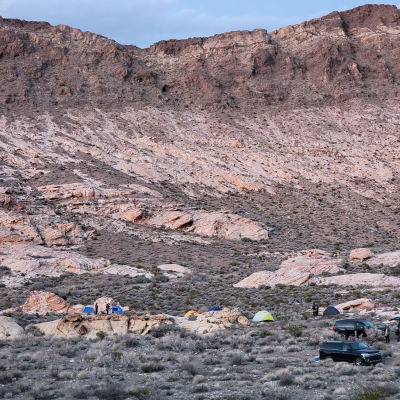News
Stay up-to-date with what's happening in EOAS
Journey Through Time: Unraveling Earth's Story in the Rocks of Las Vegas
Xutong Guan and Joel Saylor
Sixteen undergraduate and graduate students from EOSC 448 and EOSC 546 - Advanced Field Methods participated in an unforgettable field investigation. Travelling to the US from February 16 to 25, they read the history of that is written in the rocks around Las Vegas. They paged through geologic time starting with the Great Unconformity, which showcases the “missing pages” from the story of the Earth and separates 1.7-billion-year-old Vishnu Schist from 540-million-year-old Tapeats Sandstone. Younger, Paleozoic limestones contain marine fossils and indicate how the arid Mojave desert was a broad sea with a variety of creatures. Younger still, widespread Mesozoic mudstones and sandstones—including the Aztec Formation—tell of a transition from low-energy rivers and coasts to a 350,000 km2 eolian sand sea.
The students used geological mapping in Red Rock Canyon and Buffington Pockets to reorder the geological pages, which had been shuffled by multiple faults. Measuring stratigraphic sections in the Valley of Fire State Park trained them to carefully read and interpret the sedimentary record, yielding insight into the tectonic setting in which the strata were deposited and how they relate to deformation associated with the Sevier Orogeny.
The students hiked in many breathtaking trails, and camped in picturesque red rock valleys and by fantastic Joshua trees. Together they explored the geology, cooked and ate by a flickering campfire, and slept under the bright moon and twinkling stars.
The field trip was co-led by Joel Saylor and Brett Gilley. A special thanks goes out to BHP for fully and generously subsidizing this field experience for UBC students.
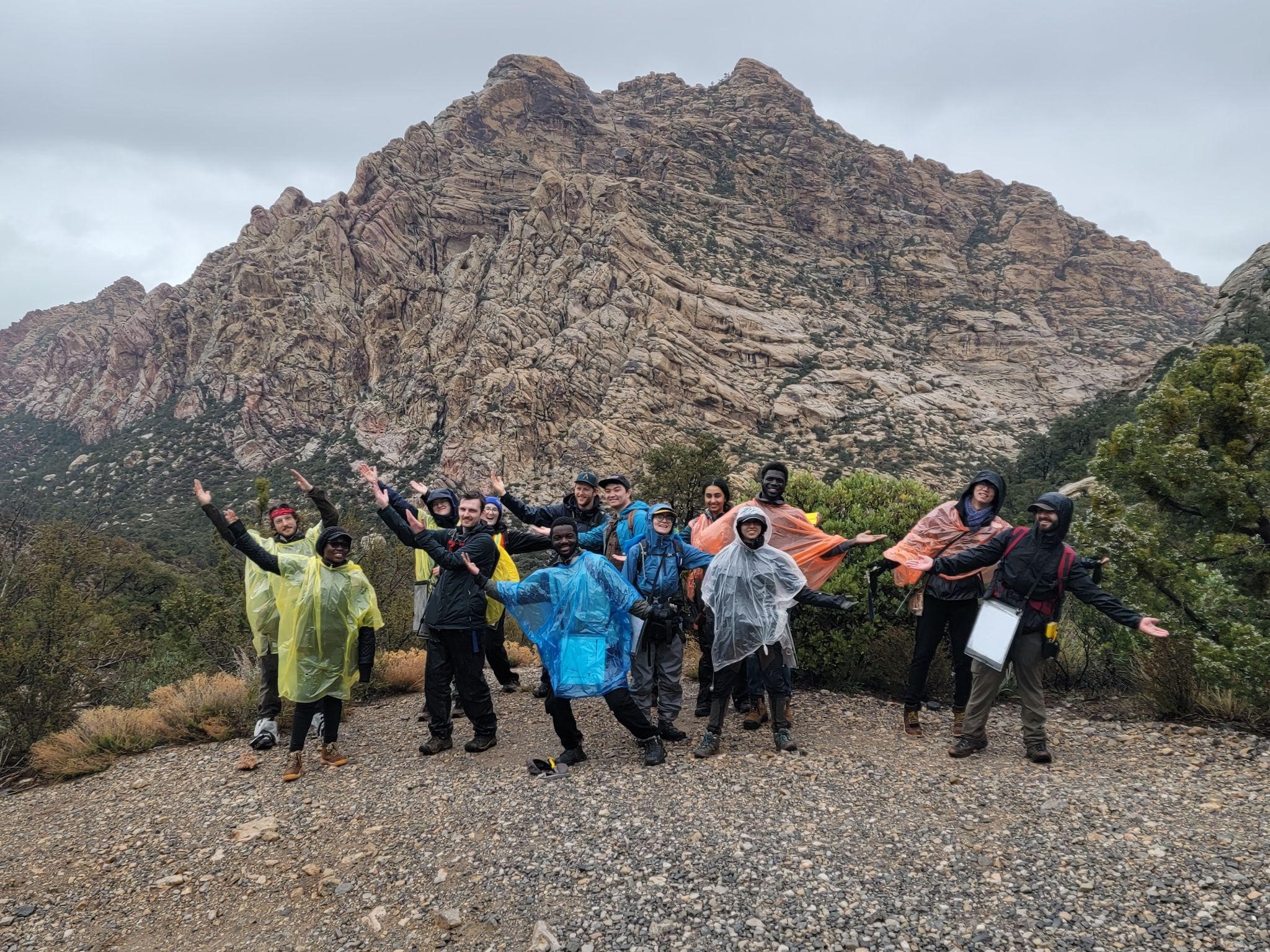
Tightly folded Jurassic Aztec Formation in the footwall of the Keystone Thrust at Red Rocks Canyon. Photo by J.E. Saylor.
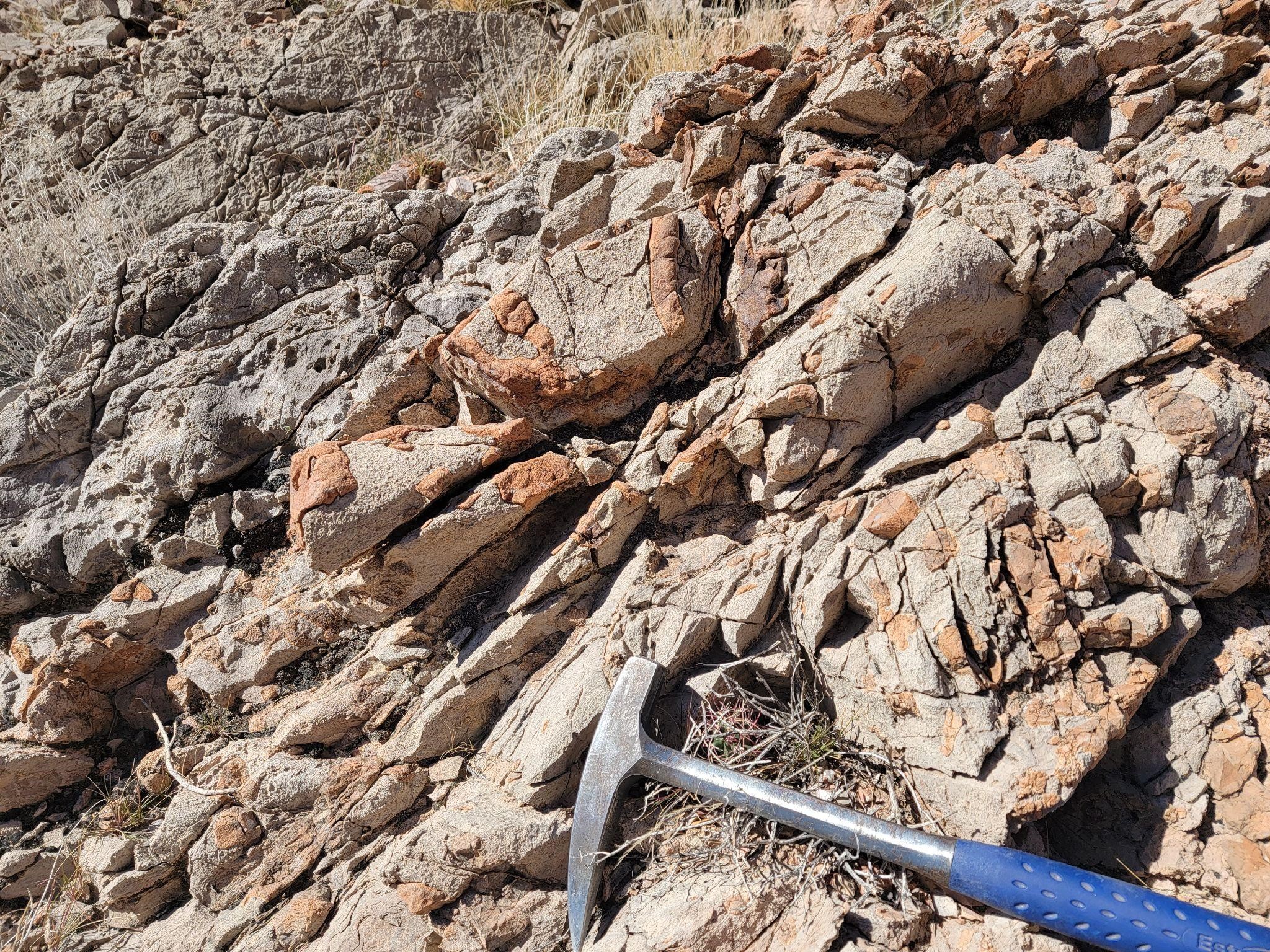
Chert-filled burrows in the Permian Toroweap Formation at Frenchman Mountain. Photo by J.E. Saylor.
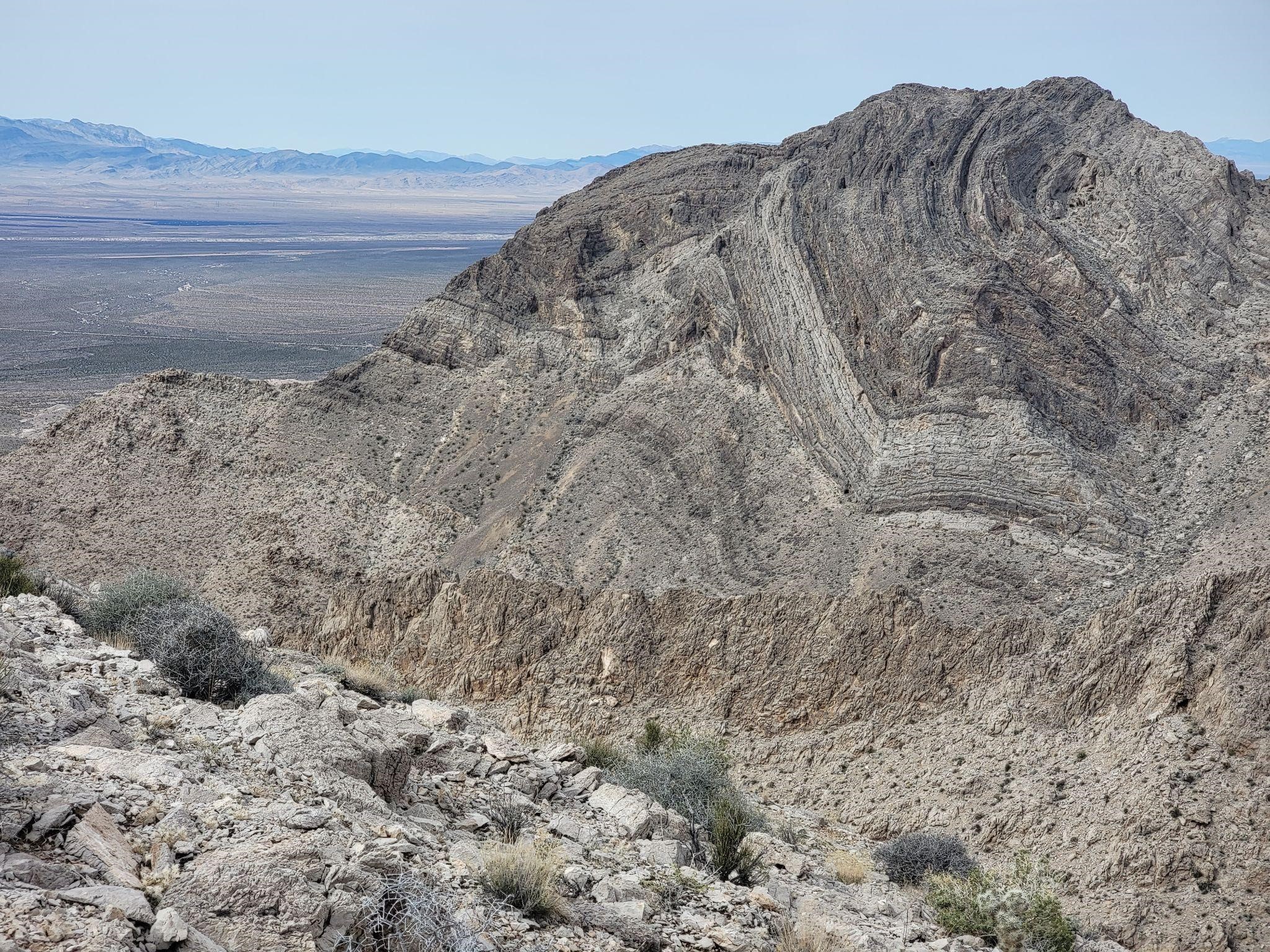
Intense deformation in the Cambrian Bonanza King Formation at Buffington Pockets. Photo by J.E. Saylor.
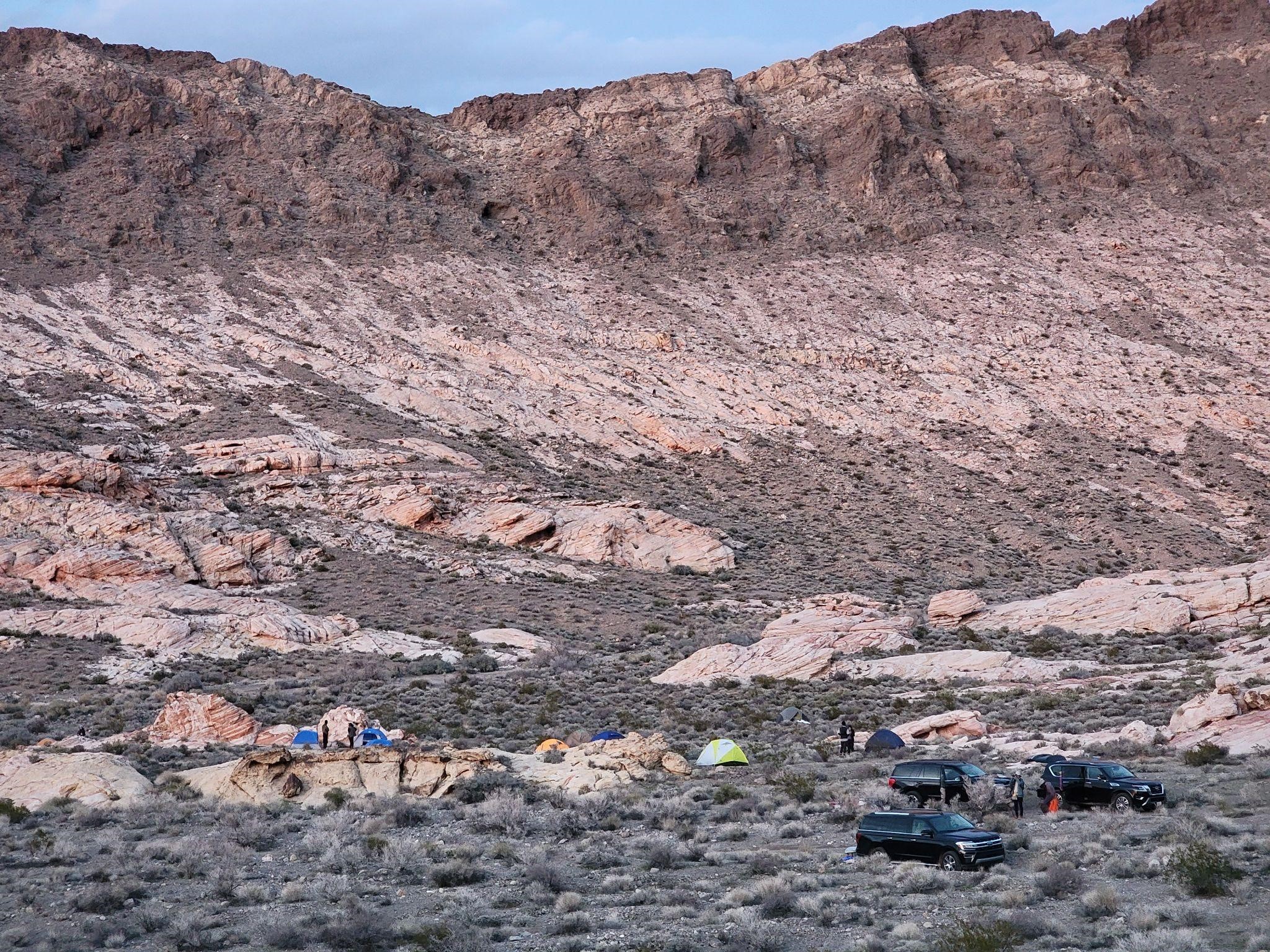
Remote camping in calico-colored Jurassic Aztec Formation below distant cliffs of grey Cambrian Bonanza King Formation at Buffington Pockets. Photo by J.E. Saylor.
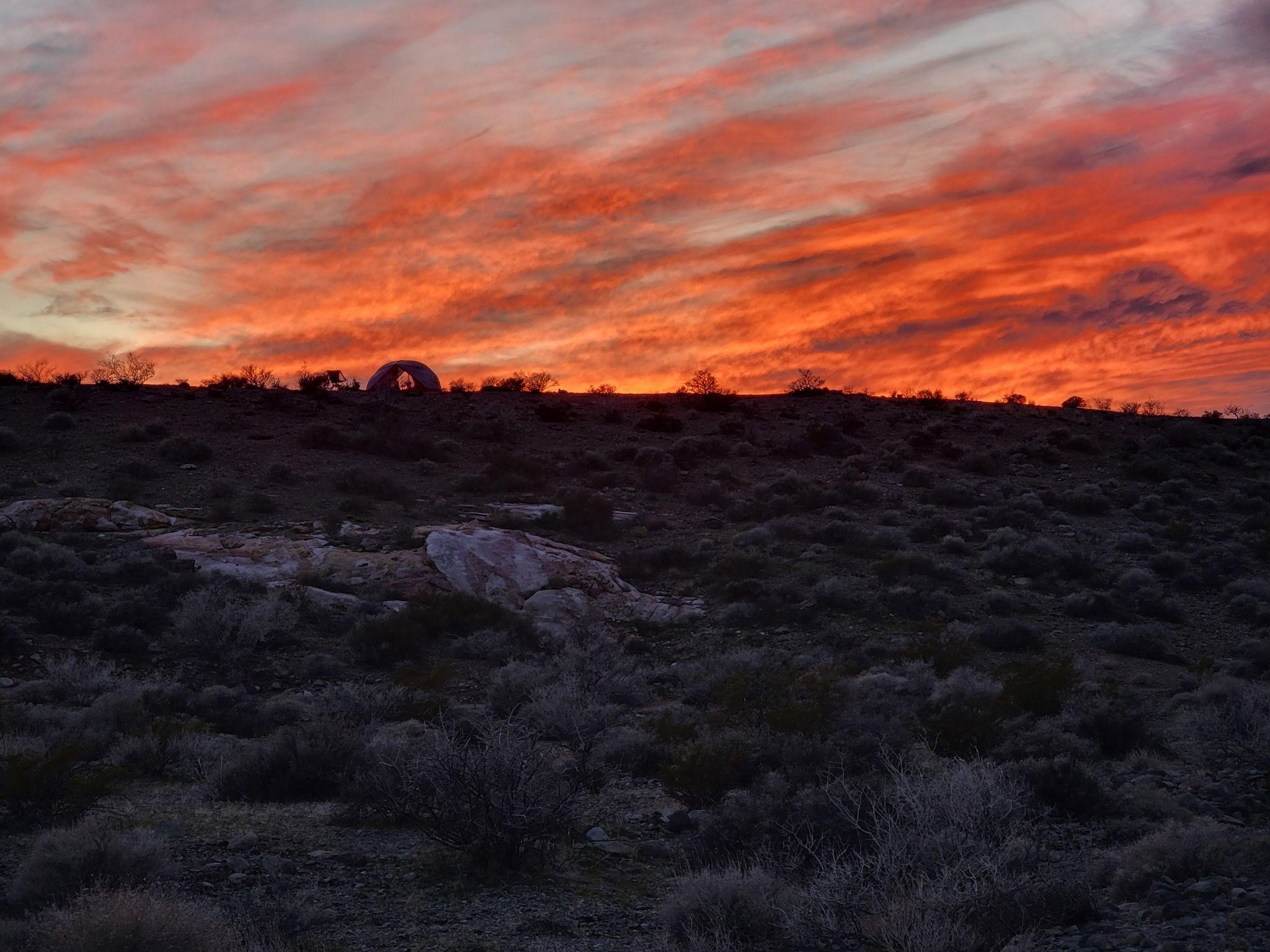
Fiery sunset illuminates a ridgetop tent at Buffington Pockets. Photo by J.E. Saylor.
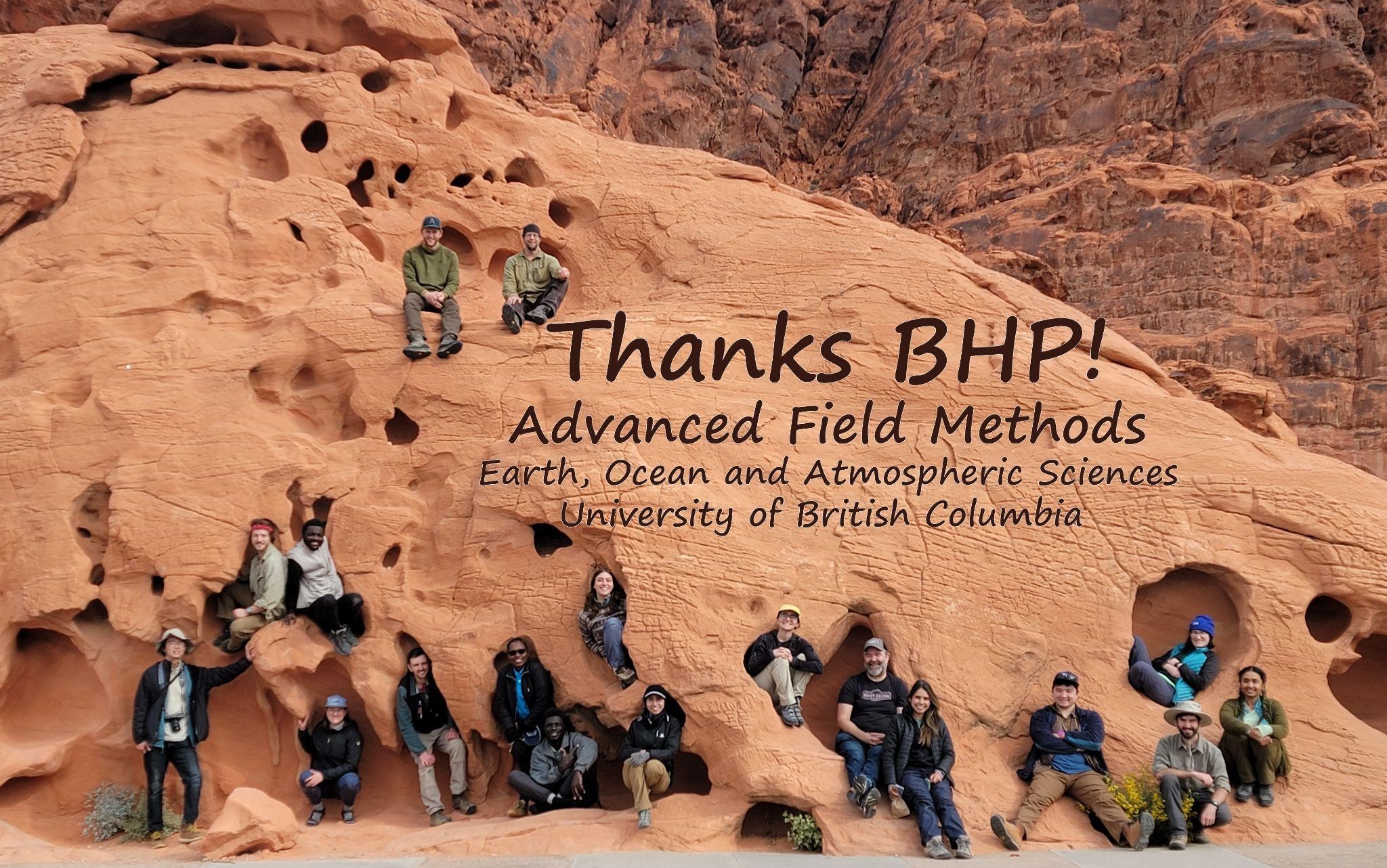
Head Search: Department of Earth, Ocean and Atmospheric Sciences
UBC Internal Search
The Faculty of Science at the University of British Columbia is seeking applications for the position of Head of the Department of Earth, Ocean and Atmospheric Sciences. The Department is committed to excellence in earth, ocean and atmospheric research and education, and plays a key role in a range of interdisciplinary programs and initiatives at UBC and beyond. Further information about the department can be found at here.
We seek a dynamic individual with an excellent international profile for scholarly activities, a strong commitment to educational programs at both the undergraduate and graduate level, and a compelling research vision for the future of the Department of Earth, Ocean and Atmospheric Sciences at UBC. The candidate should have demonstrated leadership abilities, including management, organizational, communication, and consensus-building skills. The successful candidate will be responsible for the overall academic and non-academic leadership of the Department and will be a strong advocate for the Department within the University and in the national and international arenas.
The position is for a five-year term and will be available beginning July 1, 2024. The successful candidate must hold a tenured professorial position at the University of British Columbia, with strong preference being given to a faculty member currently at the rank of Professor. The University of British Columbia hires on the basis of merit and is committed to employment equity. All qualified persons are encouraged to apply; however, Canadians and permanent residents will be given priority. We especially welcome applications from members of visible minority groups, women, Indigenous persons, persons with disabilities, persons of minority sexual orientations and gender identities, and others with the skills and knowledge to engage productively with diverse communities.
The deadline for applications is March 12, 2024; applications will be processed as soon as they are received. Applications, consisting of a cover letter, curriculum vitae (including publications record) and the names and addresses (including e-mail addresses) of at least two references, should be sent to:
Dr. Mark MacLachlan
Dean pro tem, Faculty of Science
University of British Columbia
E-mail: searches@science.ubc.ca
Posted:
February 16, 2024
Deadline:
March 12, 2024
On Earth with Dr. Roland Stull - Atmospheric Scientist
Dr. Roland Stull is a professor of Atmospheric Sciences in the UBC department of Earth, Ocean and Atmospheric Sciences. During his 26 years at UBC, his focus has been on numerical weather prediction - using large computers to forecast the weather. His research team of about 15 scientists and students study renewable energy meteorology (wind, hydro, & solar power), weather disasters (forest fires, windstorms, floods), transportation weather (highway, railroad, bus, shipping), and special projects. He is a commercial pilot, and has held a multi-engine flight-instructor certificate for many decades. In his spare time, he enjoys biking.
Uncovering the origins of continents
Until recently, the development of the first real continental crust on Earth was something of a mystery. However, research within the Earth Ocean and Atmospheric Science Department (EOAS) at UBC, published last week in Nature Communications marks a breakthrough in current understanding of the origins of the modern lithosphere.
On modern Earth, the production of new continental crust is driven by plate tectonics and, in particular, within subduction zones. Yet, plate tectonics is likely to have worked very differently, or not at all, during the first few billion years of Earth’s history. This presents a chicken and the egg problem for scientists: Did the first crust result from the start of plate tectonics or did plate tectonics start as a result of the continents developing? If not for plate tectonics, how else may the continental crust have developed?
Dr. Matthijs Smit, EOAS associate professor and Canada Research Chair, used specific chemical tracers that are unaffected by geological alteration processes to identify the source of the rocks that made up most of the newly formed continental crust during the Archaean: tonalite-trondhjemite-granodiorites (TTGs). By studying the chemical composition of TTGs across the globe, using data amassed in an international database, Dr. Smit and coauthors Kira Musiyachenko and Jeroen Goumans, were able to tease out large scale patterns. Trends in TTG compositions indicate that these rocks formed during slow burial, thickening and melting of precursor oceanic plateau crust. Their discovery provides a novel explanation of how continental crust may have originated without requiring an external driver, such as a meteorite impact. The findings published last week are a paradigm shift in the way geoscientists have understood the origins of continental crust and plate tectonics during the Archean era.
Find the original research article here, and the UBC press release here.
In remembrance – EOAS Honorary Professor Mati Raudsepp
With great sadness, we learned that Dr. Mati Raudsepp passed away on January 10, 2024.
Dr. Raudsepp obtained his B.Sc. from McMaster University in 1971 and his M.Sc. from the University of Manitoba in 1979. He received his Ph.D. from the University of Manitoba in 1984. Dr. Raudsepp first came to UBC in 1992, and served for more than three decades as the Director of the Electron Microbeam/X-Ray Diffraction Facility. He also held an appointment as a Research Associate and Honorary Professor. Working with many students, faculty and technical staff, Mati built world-class expertise in quantitative X-ray powder diffraction, supporting basic research and industry needs. He also trained generations of graduate students in data collection and analysis. Mati made broader contributions to his field, serving as Treasurer of the Mineralogical Association of Canada from 1996 to 2006. In 2006, he was awarded the MAC’s Leonard G. Berry Medal, in recognition of his many contributions.
https://www.eoas.ubc.ca/people/matiraudsepp
https://obituaries.thespec.com/obituary/mati-raudsepp-1089268885
New video series: First-year Courses in EOAS
Curious about Earth Sciences? Introducing our newest video series - First-year Courses in EOAS!
ATSC 113 · Weather for Sailing, Flying & Snow Sports
EOSC 110 · The Solid Earth: A Dynamic Planet
EOSC 112 · The Fluid Earth: Atmosphere and Ocean
EOSC 114 · The Catastrophic Earth: Natural Disasters
EOSC 116 · Mesozoic Earth: Time of the Dinosaurs
EOSC 118 · Earth's Treasures: Gold and Gems
